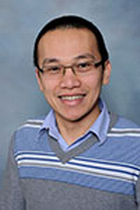Fundamental Limits and Coding for Additive Gaussian and non-Gaussian Channels
In many communication channels, the additive white Gaussian noise (AWGN) has been widely used to model the receiver thermal noise. Over the last few decades, many state-of-the-art techniques have been developed to address the problem of reliable transmissions over AWGN channel links in digital communications. These developments include both information-theoretic studies and explicit source and channel coding/modulation schemes for practical purposes. As a result, effective solutions have been devised and the results can serve as the fundamental theory and practice behind many modern communication systems. While AWGN model is useful in providing an insight into the underlying behavior of communication systems, it ignores some other impairments which are prevalent in various communication environments. For instance, non-Gaussian impulsive interference caused undesirable impulse triggers in the form of random bursts that occur over short durations severely affect the throughput and reliability of many modern communication systems, including power line communications, digital subscriber lines, cognitive radio, urban and indoor wireless communications, underwater acoustic communications and so on. Non-Gaussian interference is also observed in audio, video, and imaging systems. Despite many advancements, channels under non-Gaussian interference are not fully understood, from both an information-theoretic and a practical point of view.
This talk shall provide an introduction on the well-established area of information theory and coding for AWGN channels, as well as emerging research directions in information theory and coding for non-Gaussian channels. The talk is divided in two parts. In the first part, I will introduce some introductory materials on information theory and coding designs in AWGN channels. The main focus is on the Shannon capacity and evolution of error control coding from the simplest block codes such as Hamming codes to near-Shannon limit coding schemes that have recently been invented. I also discuss the improvements of error control coding over AWGN channels during the last few decades, with respect to both the error performance and the complexity issue. In the second part of the talk, I will provide an overview of current research on information theory and coding for non-Gaussian and non-linear channels, with particular attention paid to impulsive interference channels and channels with low-resolution output quantization. I will also discuss major open research issues and directions for future research on these channels.
Date and Time
Location
Hosts
Registration
-
 Add Event to Calendar
Add Event to Calendar
- UBC, Okanagan Campus, 3333 University Way
- Kelowna, British Columbia
- Canada
- Building: EME
- Room Number: 4218
- Contact Event Host
- Co-sponsored by UBC Okanagan
Speakers
 Dr. Nghi Tran of The University of Akron, OH, USA
Dr. Nghi Tran of The University of Akron, OH, USA
Biography:
Dr. Tran received the B.Eng. degree from Hanoi University of Technology, Vietnam in 2002, the M.Sc. degree (with Graduate Thesis Award) and the Ph.D. degree from the University of Saskatchewan, Canada in 2004 and 2008, respectively, all in Electrical and Computer Engineering. From May 2008 to July 2010, he was at McGill University as a Postdoctoral Scholar under the prestigious Natural Sciences and Engineering Research Council of Canada (NSERC) Postdoctoral Fellowship. From August 2010 to July 2011, Dr. Tran was at McGill University as a Research Associate. He also worked as a Consultant in the satellite industry. Since August 2011, Dr. Tran has been with the Department of Electrical and Computer Engineering, University of Akron, OH, USA. Dr. Tran’s research interests span the areas of signal processing and communication and information theories for wireless systems and networks. Dr. Tran is currently an Editor for IEEE Transactions on Communications, an Editor for IEEE Communications Letters, an Editor for Elsevier Physical Communication, and a Lead Guest Editor for EURASIP Journal on Wireless Communications and Networking, Special Issue on Full-Duplex Radio: Theory, Design, and Applications. Dr. Tran has been serving as a TPC member for a number of flagship IEEE conferences. He was a TPC co-Chair of the Workshop on Trusted Communications with Physical Layer Security for IEEE GLOBECOM 2014, a Publicity Chair of the Workshop on Full-Duplex Communications for Future Wireless Networks for IEEE ICC 2017, a Publicity Chair of the Second Workshop on Full-Duplex Communications for Future Wireless Networks for IEEE GLOBECOM 2017, and a Publicity Chair of the Third Workshop on Full-Duplex Communications for Future Wireless Networks for IEEE ICC 2018.
Address:The University of Akron, , Akron, Ohio, United States

